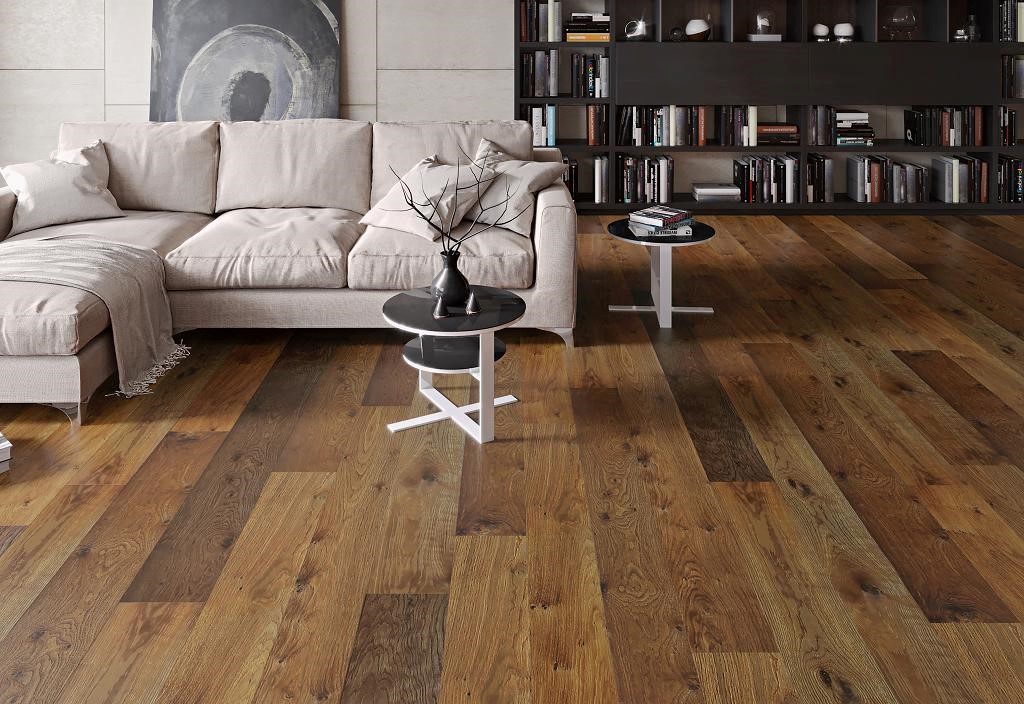If you are thinking about installing wood floors in your home, then you are on the right track. All types of wood flooring have an unrivaled natural beauty to match any kind of décor, whether country, traditional or modern. Their texture and grain offer warmth and you can choose from a variety of colors and finishing. We’re passionate about home style and aesthetics as well as organisation so we’ve rounded up tips on all you need to know about wood flooring.
You can install wood flooring in almost all the rooms in your building. However, basements and kitchens require special considerations. When you want to choose a wooden floor material for your home, the available options may overwhelm you. Therefore, this article will help you to choose the type that is suitable for you.
Types of Wood Species
Each wood has unique features and the one you choose will impact the overall appearance of the floor including the grain pattern and color. Below are some popular options.
1. Oak
It has a high value and can be used for various interior decoration because of its performance. It has a structure that can pass as both traditional and modern. It can also produce several patterns and designs, from expressive to calm.
Its knots and very light sapwood give it different shades such as the natural brown color. And as the oak tree matures, it becomes more golden.
2. Ash
It is known for its resilience and toughness. It is an ideal choice for applications that require high strength. It also has a sharp contrast between light sapwood and dark heartwood. This often leads to a vibrant pattern and a rich combination of shades. The species is quite hard and gets a warm gold tone over the years.
3. Walnut
It has excellent properties for woodworks because of its soft characteristics. You can find it in various colors such as light brown, dark chocolate, or creamy white with sapwood. It brings a sturdy character to your floor and the brown hue may change to red with use.
4. Maple
This is a hard, light species that is highly wear-resistant. Its shades are even and calm with straight grains. Its texture is even and fine, surrounded by wavy growth rings. And it becomes golden and darker after a period of exposure to sunlight.
5. Beech
This is a hardwood species, and it is quite durable. It is even stronger than most species because of its cell structure. It has a uniform appearance as well as beautiful warm yellow shades. Over time, the reddish color changes to gold tones.
6. Birch
This is a popular Scandinavian wood. It is quite light and possesses a calm note with deep inner beauty. It is a bit soft and unsuitable for busy places. The grain variations are almost invisible, and its color will become darker and golden with use.
You may want to check this website to find more information on species of wood.
Wood Flooring Colors and Designs
No two wood floors can look alike because each tree has unique characteristics. And different sections of a tree carry different cells that make them unique. Also, they can appear expressive, calm, or lively.
Apart from the type of wood specie, other factors such as sapwood and knots could affect the color of your flooring. However, different treatments and surface effects can help to create several styles that will match your taste.
Surface effects are techniques that add contrast and character to the wood flooring. They include adding indentation or saw marks or brushing. When the workman adds indentation or saw marks, it lends a vintage feel and appearance to the floor. On the other hand, brushing emphasizes the wood’s patterns, which further enhances the wood’s natural structure.
Some common surface effects are:
1. Brushed
This involves slight brushing which polishes the wood’s pattern, bringing out a contrast between its fibers without going deep.
2. Antique Brushed
It involves structural brushing in order to get a very deep but smooth surface. It plays with the wood’s density, highlighting each natural detail.
3. Deep Brushed
The brushing is semi-structural and helps to enhance the rustic appearance of the wood.
4. Complete Saw Marks
This involves making saw marks around the wood’s width. It gives a rustic and recycled design.
5. Biased Saw Marks
Here, the saw marks are done randomly. The random position and depth of the marks create a natural outcome. The saw marks cover most of the wood’s length.
6. Indentation Marks
This is a camouflage effect that is suitable for absorbing dents. It highlights an aspect of the wood’s natural finish.
You may also want to check out https://www.housebeautiful.com/home-remodeling/a26683284/hardwood-floor-colors/ to know how to choose colors for your wooden flooring.
Conclusion
Wood is versatile and can be used for various types of wooden floors in different rooms in a home. This article discussed the types of wood species, their features, and the different wood flooring colors and designs. With the knowledge gained, you can match and mix woods, colors, and designs to achieve a suitable style.

